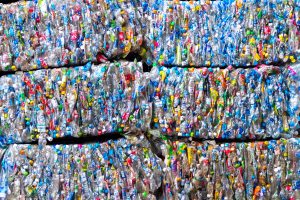Recycled Polymers As a Feedstock for Chemical Manufacturing Supply Chains in the United States: A Network Analysis for Polyethylene Pyrolysis
For chemical recycling of plastic wastes to be viable, chemical products generated in recycling need to find markets. A network model of the U.S. chemical manufacturing industry was used to assess at what cost points, and the extent to which, chemical products from thermal pyrolysis of polyethylene might find markets in the current U.S. chemical manufacturing industry.
Network modeling determined the cost points at which the simulated industry network utilized the thermal pyrolysis products and which processes were displaced by the supply of recycled materials. The characteristic feature of the simulations is the large number of processes in the chemical manufacturing network that are impacted by the availability of a relatively small number of products from polyethylene recycling.
In the case of polyethylene recycling, the capital cost requirements for expanding capacity to effectively utilize the recycled materials is greater than the capital required for the pyrolysis process. This suggests that identifying scenarios where recycled materials can be utilized in processes that have excess capacity will be a critical consideration in techno-economic analyses of recycling plastics.
To read the full paper by Zhichao Chen, Yosuke Kimura , and David T. Allen in ACS Sustainable Chemical Engineering, click here.
Image by jj-ying on Unsplash.






